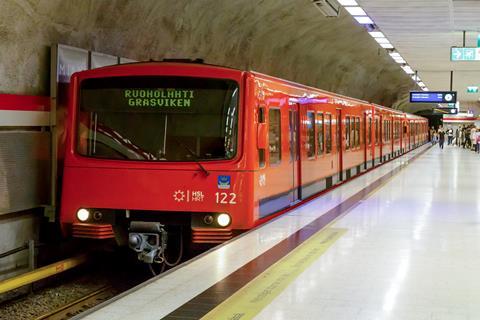For the 200th Classic Kit, Andrea Sella celebrates a crucial efficiency improvement for motors
I’m supposed to be a chemist. Yet over the past year I have found myself spending more and more time travelling down a rabbit hole of electrical engineering and building services. The reason is climate change. The cataclysmic fires of the Greek islands, Siberia and Canada or the devastating rains that have engulfed Brazil, Kenya and Papua New Guinea, just in the last year, may seem far away. But the systemic nature of the climate system means that the reality is that no one is safe. Sooner or later all of us will pay its price.
I worry that we chemists have been asleep at the wheel, perhaps deluding ourselves that our work on batteries, solar cells and antibiotics to ‘change the world’ gives us license to operate with a much higher energy and carbon intensity than the rest of the population.
Related stories
- Working in the chemical industries, plural
- Long hours are a short-term solution for skills shortages
- Making strides in sustainable laboratories: Examples of recent initiatives
As an example, my own building at University College London in the UK draws about 4GWh of electricity per year. Even though the British electricity grid is decarbonising faster than many would have dared to predict even a decade ago, this amounts to some 800 tonnes of carbon dioxide from electricity use alone. Each of the 200 teachers, researchers and technicians who work in the building therefore has an extra 3.5 tonnes of carbon dioxide on their balance sheet; that is about 50% more than the average Briton. And this is before we heat our building, let alone consider the emissions associated with our online activities, the reagents, solvents and scientific instruments that we buy, and the conferences we travel to. We need to look in the mirror.
It was this that led me to ask what we could do to reduce our footprint. After we managed to cut our water use by 95% (we collaboratively re-thought how we cool our processes from chemical synthesis to high vacuum), I imagined that it might be relatively simple to make changes to ventilation to start to make a dent in our huge emissions. It is a story for another time. And we are only in the foothills of an enormous mountain that we need to climb; the learning has been intense. At the heart of this effort sit our fumehoods, so ubiquitous in our labs that we take them for granted.
In a recent meeting, I found myself having a minor argument with some colleagues from our estates team over what constitutes a fumehood. Is it simply the wood and laminate cabinet with a sash, electrical plugs and some spigots for service? Or does discussion of a fumehood necessarily include the ductwork and the extract fan? And must it also include (pace Lavoisier’s ‘nothing is created and nothing is destroyed’) the air handling unit that channels fresh air back into the lab? The discussion matters because it is that invisible infrastructure that consumes the vast proportion of the energy used by a lab.
Motoring ahead
Have you ever been to a plant room and seen the size of the fans that whirr round the clock and the three-phase motors that drive them? These industrial installations should be seen by everyone. If we gave more thought to how we operate these motors we could make really deep cuts in our emissions to make the future less challenging for those who will outlive and follow us.
A key technology to achieve this was developed by a modest Finnish electrical engineer. His name is almost unknown outside of a small coterie of the aficionados of the history of electrical engineering, yet the contribution that he and his co-workers made to the control of electrical motors is one of the most important parts of the current drive to electrify everything.

Martti Harmoinen (1934–2023)
Source: Courtesy of Jukka and Antti Harmoinen
Finnish electrical engineer whose inverter drive holds the key to reducing the costs and emissions of running motors
Martti Harmoinen was born into a farming family on Rytkynjärvi, a lake deep in the Finnish heartland. He was very much a country boy, and his passion for the countryside never left him. Money was scarce; Martti would later write that his Sunday treat was a slice of wheat porridge. In an age of global travel, it is hard to imagine that the only town he had visited before the age of 18 was Iisalmi, some 30km away, where he was taken, aged three, suffering from intestinal tuberculosis. Not expected to survive, he was sent home. Nurtured by his parents, he slowly recovered.
He loved school, encouraged by his parents and his teachers. As a teenager, when he heard that a boy from a nearby village had made it into Helsinki University of Technology (TKK), Finland’s leading technical university, he figured that he might do the same. His father got hold of a set of entrance exam papers and Martti, whose teachers were unable to help him, taught himself. As he would recount in an interview in 2016, ‘I struggled with it for a few weeks, and gradually I started to understand the stuff.’ Against stiff competition he won a place for one of the most challenging degrees at TKK, technical engineering physics, and he headed 500km south, leaving his home village for only the second time in his life.
TKK (today part of Aalto University) was a revelation. Set on a beautiful promontory near Helsinki, the site and some of the key buildings were designed by the legendary modernist architect Alvar Aalto. Harmoinen would later remember brilliant lectures in control engineering and semiconductor physics. Nuclear physics piqued his interest and he began to hope for a job related to nuclear reactors. He got plenty of experience in electronics – all of it based on vacuum valves – especially during his final year dissertation, for which he built a zone fusion device for tungsten purification.
When he graduated in 1960, he married, completed his compulsory military service, and then looked for a job. There was nothing in nuclear physics, so he applied instead to the leading Finnish electrical manufacturer, Strömberg. Set up in the late 19th century, it had become one of the largest industrial companies in Finland, making mostly DC electric motors, stoves and transformers. Although he correctly answered a question about electrical phase in his interview, Harmoinen knew little of electric motors; his boss assigned him to testing synchronous and asynchronous motors, a foundation that would stand him in good stead.
Taking control
About a year later, when the company set up an electronics division to design controllers using the new ‘solid state’ semiconductor technology, Harmoinen joined the new project. It was a heady time. Components like diodes, transistors and thyristors (voltage-gated diodes) were only just coming onto the market. Harmoinen and his colleagues spent time reading the technical literature – back then the big electronics firms like Phillips, AEG, ASEA and Brown Boveri published in-house technical magazines that were a treasure trove of ideas for the young engineers at Strömberg. By the end of the 1960s their controllers were at least as good as anything made elsewhere in Europe. Strömberg DC motors began to be adopted as the Finnish railways electrified their operations.
But there is a fundamental problem with DC motors. They require brushes to make electrical contact with the central rotor and this leads to steady wear. By contrast, AC induction motors based around the squirrel-cage design pass the current through a set of static coils; the resulting rotating magnetic field induces currents in the metal sheets of the rotor at the centre of the motor. The resulting torque causes the rotor to spin. Because they require no physical contact, such AC motors can be sealed and require far less attention over their lives. Their chief limitation is that the frequency of rotation is determined by the frequency of the applied power.

Source: © Risto Hunt/Alamy Stock Photo
The M100 trains of the Helsinki Metro were the first in the world to be equipped with AC induction motors – an advance made possible by Harmoinen’s inverter drive
In 1964, a pair of Brown Boveri engineers published a paper – densely written, and highly mathematical – that suggested a scheme by which one could construct sinusoidal signals of any desired frequency by assembling pulses of electricity of carefully chosen timing, length, phase and intensity. Such a scheme would make it possible for an AC motor to speed up or slow down on command. It took years for Harmoinen and his colleagues to get their heads round the paper and the technical challenges it posed. They tried and tried to build such a device, using thyristor technology to first rectify the current to DC and then generate the new, inverted current pulses. For a long time, they had only modest success. Their failure to deliver working products led to significant tension with colleagues from the DC part of the business.
The decision to build the Helsinki Metro provided the objective that spurred Harmoinen and his colleagues on. There was also the threat that Soviet DC motors might be chosen for the project; given the tense relationship with the Soviets, national pride was at stake too.
In the mid-1970s, Harmoinen’s team delivered sealed AC motors with variable speed inverter drives that allowed rapid acceleration, while the braking heated the carriages, a big consideration in winter. Named the Strömberg Asynchronous Motor Inverter (Sami – a reference to the nomadic reindeer-herding people of northern Scandinavia), the drives were revolutionary and made Strömberg a major international player. And in the decades since, steady improvements have led to extremely high motor efficiencies. But Harmoinen’s invention may have proved his employer’s undoing. In 1987, Strömberg was taken over by its Swedish competitor ASEA, which then merged with Brown Boveri, ironically the firm where the idea of control through pulse width modulation had originated, becoming the international giant ABB. And in a further twist, the inverter business has since been sold on.
What makes electric motors so special is that they elegantly side-step the limits of Carnot’s heat engine. With temperature difference irrelevant, inverter drive motors generate useful work and motion with extreme efficiency as their speed and torque can be tuned separately, with exquisite precision, leading to huge energy savings. Perhaps belatedly we are putting inverter drives to every motor that runs our ventilation, and if we added inverter-controlled heat pumps to recover the heat we currently throw away, we could run on circular heat, enormously reducing both our costs and our emissions.
Martti Harmoinen retired in 2000, spending his summers fishing for muikku fish at a lakeside house he built with his two boys and his brother in the 1980s, not far from where he grew up. He died in 2023 and it makes me sad that I never got the chance to talk to him. But I cannot think of a better tribute than to put his technological leap at the heart of everything we do.
Acknowledgments
I am grateful to Jukka and Antti Harmoinen for their memories and photographs of their father. Petja Partanen and Veli-Matti Lapponen shared memories and an archive of documents. John Burgess, Michael de Podesta and Alistair Siddons provided instruction and inspiration.



